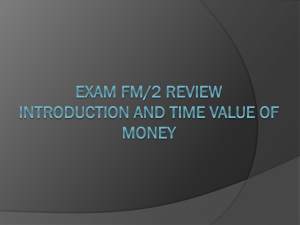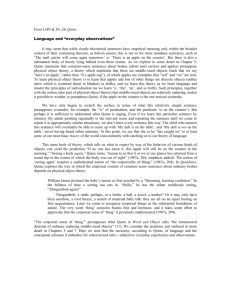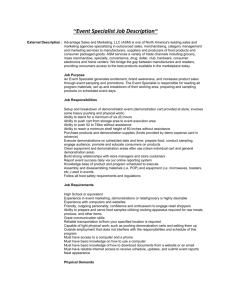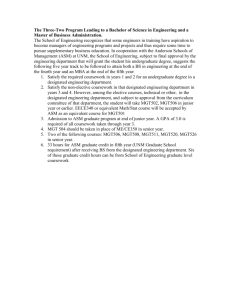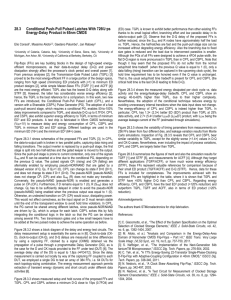Questions asked
advertisement
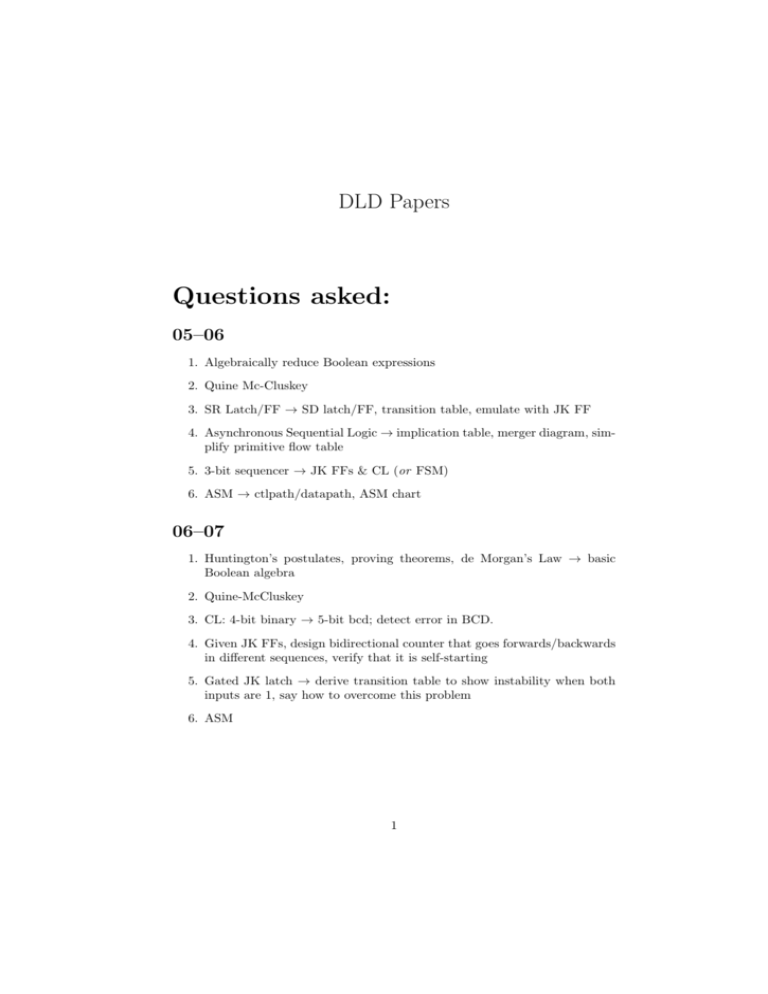
DLD Papers Questions asked: 05–06 1. Algebraically reduce Boolean expressions 2. Quine Mc-Cluskey 3. SR Latch/FF → SD latch/FF, transition table, emulate with JK FF 4. Asynchronous Sequential Logic → implication table, merger diagram, simplify primitive flow table 5. 3-bit sequencer → JK FFs & CL (or FSM) 6. ASM → ctlpath/datapath, ASM chart 06–07 1. Huntington’s postulates, proving theorems, de Morgan’s Law → basic Boolean algebra 2. Quine-McCluskey 3. CL: 4-bit binary → 5-bit bcd; detect error in BCD. 4. Given JK FFs, design bidirectional counter that goes forwards/backwards in different sequences, verify that it is self-starting 5. Gated JK latch → derive transition table to show instability when both inputs are 1, say how to overcome this problem 6. ASM 1 07–08 1. Prove problems using Huntingdon’s Postulates & theorems; simplify 3 Boolean functions 2. Quine McCluskey d 3. 4-bit synchronous bidirectional sequencer (Fibonacci Series) with JK FFs (ie, ST OP → 1 → 2 → 3 → 5 → 8 → 13 → ST OP ) 4. Asynchronous Sequential Logic → draft transition table, total transition table, primitive flow table 5. Race free state assignment for Asynchronous Sequential Logic using transition diagrams, given flow table 6. ASM design 08–09 1. Using Huntingdon’s postulates and theorems, prove an expression; list all 16 Boolean functions of 2 variables; explain canonical/standard/nonstandard 2. Using KMaps, minimise CL 3. JK FFs for a synchronous up/down sequencing counter that goes up like one sequence and down in another, verify self-starting 4. Given description, draw state diagram, design light controller using D FFs 5. ASM design with 2-bit full adders/subtractors 6. Implication tables/Merger diagrams to minimise flow table 09–10 1. Difficult Boolean algebra question, hard to read/make sense of 2. KMaps for designing ALU 3. Quine McCluskey 4. Minimise primitive flow table with implication tables/Merger diagrams 5. Given state equations for FSM ctlpath, complete design of the FSM using JK FFs 6. ASM 2 Observations: • Q1 is usually a simple Boolean algebra question, make a point of learning simple things like Huntingdon’s postulates and definitions of canonical/standard/nonstandard forms. When Coghlan asks about the ”intersection” of two generations/etc, it means the two expressions ANDed.Similarly, when he asks about the ”union” of them, it means the two expressions ORed. • There is often a whole question on Quine McCluskey, which is easy marks, especially when it is the recurring ”When 4 out of 5 inputs are 1, the function is 1” question. • There is a trend of setting one or two very difficult questions every year— this is done on purpose. Coghlan puts enough easier questions on the papers for most people to pass. Students aiming for very high grades are supposed to attempt these very difficult questions in order to get a first. • Question 5/6 is often just creating an ASM Easy questions: • Basic Boolean logic, usually Q1 • Quine McCluskey (but it doesn’t always come up) • Minimising (primitive) flow tables with implication tables and flow diagrams (read Mano) • Combinatorial Logic, sometimes a Q2/3 — sometimes called ”designing an ALU” • JK F/F questions, and simple Synchronous Sequential Logic questions • Race-free state assignment for Asynchronous Sequential Logic 3
